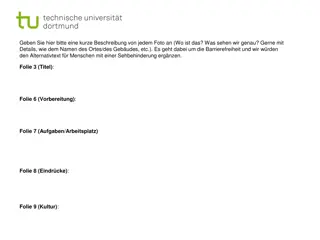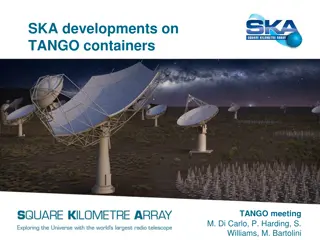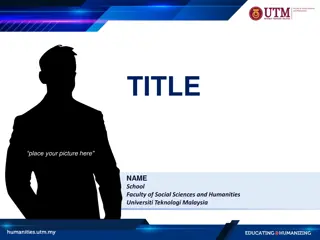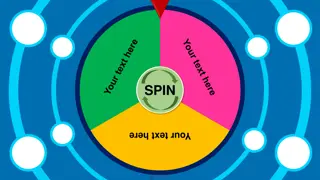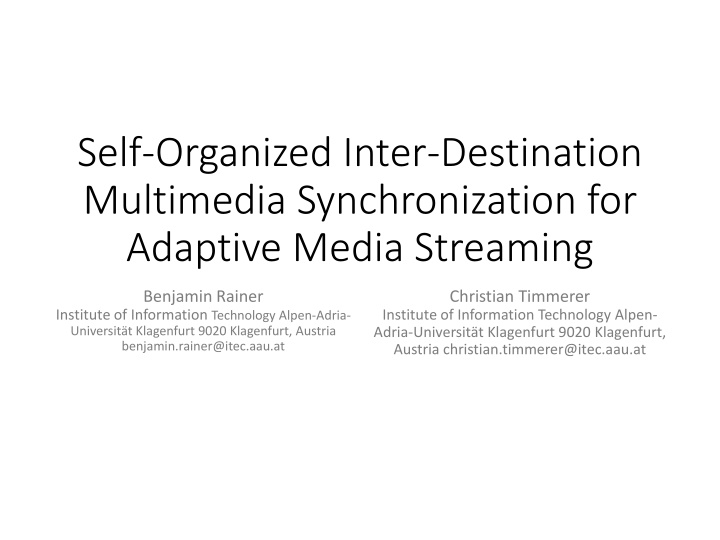
Self-Organized Inter-Destination Multimedia Synchronization for Adaptive Media Streaming
Explore the innovative concept of Inter-Destination Multimedia Synchronization (IDMS) for adaptive media streaming, addressing challenges and detailing the architecture with session management and synchronization approaches. Learn about the synchronization points and strategies for seamless playback across peers in a distributed network environment.
Download Presentation

Please find below an Image/Link to download the presentation.
The content on the website is provided AS IS for your information and personal use only. It may not be sold, licensed, or shared on other websites without obtaining consent from the author. If you encounter any issues during the download, it is possible that the publisher has removed the file from their server.
You are allowed to download the files provided on this website for personal or commercial use, subject to the condition that they are used lawfully. All files are the property of their respective owners.
The content on the website is provided AS IS for your information and personal use only. It may not be sold, licensed, or shared on other websites without obtaining consent from the author.
E N D
Presentation Transcript
Self-Organized Inter-Destination Multimedia Synchronization for Adaptive Media Streaming Benjamin Rainer Christian Timmerer Institute of Information Technology Alpen- Adria-Universit t Klagenfurt 9020 Klagenfurt, Austria christian.timmerer@itec.aau.at Institute of Information Technology Alpen-Adria- Universit t Klagenfurt 9020 Klagenfurt, Austria benjamin.rainer@itec.aau.at
Introduction The traditional TV scenario as we know it, watching TV with friends and family, is becoming increasingly location independent Utilize communication channel, e.g., text, voice and video Playback synchronization Inter-Destination Multimedia Synchronization (IDMS)
Challenges of IDMS appropriate synchronization point where asynchronism does occur smoothly and imperceptibly synchronize the multimedia playback at the peers existing push-based IDMS approaches utilize RTP/RTCP receiver reports to signal timing and control information extends IDMS to pull-based over-the-top streaming by adopting MPEG Dynamic Adaptive Streaming over HTTP (MPEG-DASH)
Architecture of IDMS for DASH Session management Defining IDMS Session Objects (ISOs) Stored at Multimedia Presentation Description (MPD) server
Session Management Inter-Destination Multimedia Synchronization Session Object (ISO) Time bounded entity containing a set of peers uniquely identifiable (IP, port) and the type of the Network Address Translator (NAT) ISO is identified by session key Provided by 3rd party application or the user Integrated into the MPD of MPEG-DASH Server imports the corresponding ISO when requested E.g., a peer requests the MPD with a session key
Two phase Synchronization Coarse synchronization request the segments which are currently played by other peers within the IDMS session Overlay creation Strategies for selecting the segment to start with (e.g., minimum, maximum, or average) starts with a segment that is as closest as possible to the segment the other peers are currently playing Fine synchronization Distributed algorithm Merge and Forward Periodical sends constants sized message to neighbors Negotiate on reference playback timestamp
Dynamic AMP for IDMS Overcome asynchronism by increasing or decreasing the playback rate Select those content sections which mask the playback rate variation Content features for measuring the distortion caused by AMP Audio: spectral energy of audio frames Video: motion intensity between consecutive video frames
Evaluation Overhead of Merge and Forward (simulated the algorithms on Erd os-Renyi random networks implemented using OMNeT++) Traffics Time Subjective quality assessment using crowdsourcing A/V metrics AMP approach
Evaluation of Merge and Forward Aggregates each peer aggregates all received playback timestamps into a single message and sends them periodically to its neighbors using unicast
Evaluation of Merge and Forward the time for the distributed calculation of the average playback timestamp
Evaluation of the dynamic AMP 15 minutes and offered $0.25 as a reward (g(X), )
Conclusion Introduced IDMS to Adaptive Streaming MPEG-DASH Distributed Control Scheme that scales with the number of peers Can be combined with any streaming protocol Not coupled with the session management or the overlay creation Dynamic AMP for carrying out the actual synchronization (General) Optimization problem that aims on finding appropriate content sections Demo video available on YouTube https://www.youtube.com/watch?v=2V9rO5SbI7A Search for: MergeAndForward Source Code available at: https://github.com/grishnagkh/mf


